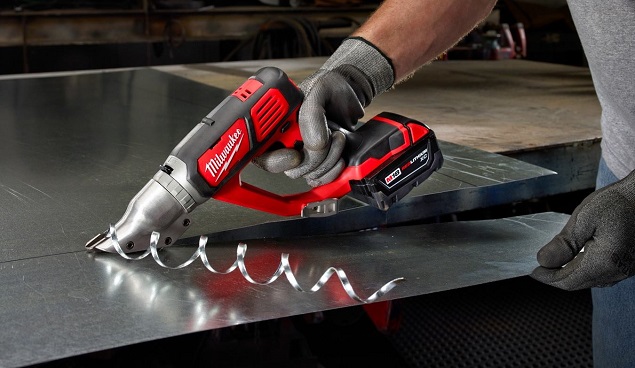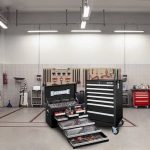Cutting or ‘blanking’ the flat pattern from a sheet metal is a process that can be done with a couple of methods. When making the decision which method of sheet metal cutting is the right one for your needs, you should consider factors such as speed, flexibility, finish, accuracy, automation and cost. There are certain things that need to be factored in depending on the material you are cutting, so for that reason in this post we have decided to pay special attention to cutting aluminium and the variety of power tools that can be used to perform this.
Power Shears
Double cutters and power shears sheet metal cutters are a common sight in sheet metal shops. Being basically portable, power shears sheet metal cutters are hand held tools which chew away at the metal as you operate with the cutting blade along its intended path. Their throatless design enables you to cut into the sheet without having to worry about the back of the tool. Besides the many advantages that these tools have, they also have some minor drawbacks such as vibration, noise and edge quality. Also, you need to have a very steady grip and a strong hand to drive the cutting blades accurately. Beware, if the sheet is not held down properly, it will shake it. And since power shears make a great number of small cuts in the sheet metal, they can leave a dangerous serrated edge which has to be properly cleaned before it is considered safe for handling.
Electric Jigsaws
As with many other things, in many cases it is of utmost importance to make the right combination of tools if your aiming at nothing but great results. In the case of aluminium cutting, the right combination of a high quality blade together with a high quality saw can result in a decent turning radius and a consistent cut. On the other hand, using the wrong blade for the material and combining it with a cheap saw will ultimately lead to a frustrating and dangerous cutting environment.
Nibblers
The nibbler is a similar type of power machine just like the power shear. It operates in a way that it punches out a section of the material as it moves nibbling away at the metal as the operator maneuvers with it. This is not the most favourite tool in shops though due to its wide kerf and sharp crescent shaped pieces that it ejects when cutting sheet metal.






Comments are closed.